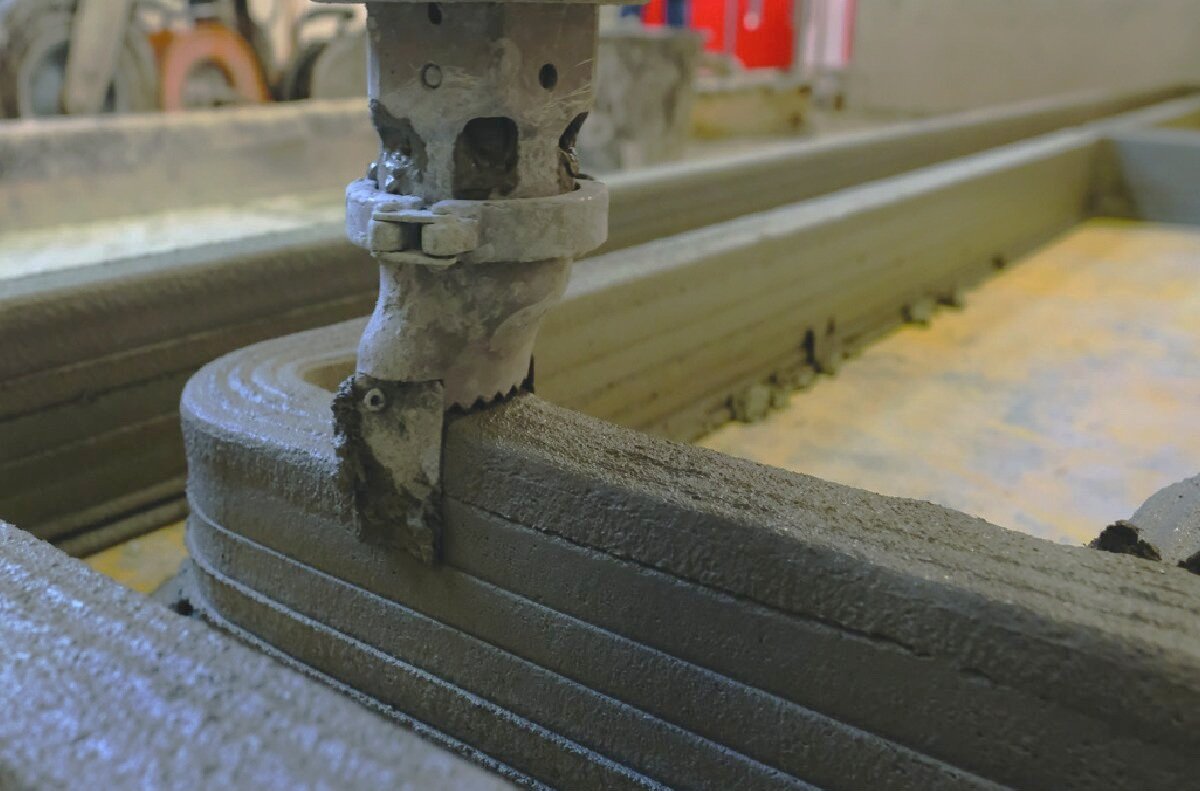The construction industry has seen significant advancements over last century, from the introduction of steel-framed skyscrapers to the utilisation of sustainable building materials but one of the most promising innovations in recent times is the emergence of the 3D printed house UK. These cutting-edge structures are changing the way we think about construction, offering a faster, more cost-effective, and environmentally friendly alternative to traditional building methods. In this article, we will delve into the world of 3D printed houses, exploring the technology behind them, their benefits, and their potential impact on the future of construction.
As 3D printed houses revolutionise the UK construction industry, numerous opportunities emerge for those seeking employment in construction jobs.
Image above from HTL.tech and below house in Cape Verde by Harcourt Architects

Are there any 3D printed houses in the UK?
The first legally habitable 3D printed house in Europe takes the form of a boulder-shaped bungalow located in Eindhoven, the Netherlands, and was initially occupied in 2021. Preceding this milestone, structures partially constructed via 3D printing had been erected in the United States and France.
In the United Kingdom, Building for Humanity, a housing developer, has embarked on an initiative to construct affordable, carbon-neutral social housing units across the nation, utilising 3D concrete printing technology. Their flagship project, situated on Charter Street in Accrington, Lancashire, involves the construction of 46 new homes through the application of 3D concrete printing.
3D printing building contractors in the UK
HTL are involved in the Charter Street project in Lancashire mentioned above and describe themselves as, ‘the exclusive distributor of 3D Construction Printing Technology in the UK and Ireland’.
The Technology Behind 3D Printed Houses
3D printing, also known as additive manufacturing, is a process that involves creating three-dimensional objects by layering material. While the concept has been around since the 1980s, it has only recently gained prominence in construction. Here’s a brief overview of how 3D printed houses are constructed.
- Digital Design The process begins with a digital architectural design of the house. This design serves as the blueprint for the 3D printing process.
- Printing A huge 3D printer, typically mounted on a gantry or robotic arm, extrudes construction material layer upon layer. In most cases, this material is a specialised concrete mixture that hardens quickly.
- Layering The printer moves in precise patterns, depositing layers of material to build up the walls and structure of the house. The speed and precision of this process are far superior to traditional construction methods.
- Finishing Touches After the basic structure is complete, traditional construction techniques are used for tasks such as installing windows, doors, plumbing, and electrical systems.
Benefits of 3D Printed Houses
- Speed 3D printing can construct a house in a matter of days or even hours, whereas traditional construction can take months. This speed can significantly reduce labor costs and speed up the availability of housing.
- Cost-effective The reduced labour, material waste, and construction time translate into lower overall costs for 3D printed houses. This affordability can make homeownership more accessible to a wider range of people.
- Sustainability 3D printing produces less waste compared to traditional construction methods. Additionally, some 3D printing materials can be made from recycled or sustainable sources, making it an environmentally friendly choice.
- Design freedom 3D printing allows for complex and innovative architectural designs that may be challenging or costly to achieve with traditional methods. Customization options are virtually limitless.
- Durability Many 3D printed houses are known for their robustness and resistance to natural disasters. The precision of the printing process ensures strong, consistent structural integrity.
Challenges and Considerations
While 3D printed houses hold immense promise, there are still challenges to overcome:
- Regulatory approval Building regulations need to catch up with the technology to ensure that 3D printed houses meet safety and quality standards.
- Material development Continued research into materials suitable for 3D printing is essential to enhance durability and sustainability.
- Skilled labour Even though 3D printing reduces the need for manual labour, skilled technicians are required to operate and maintain the printers.
The Future of 3D Printed Houses
As the technology matures and becomes more widely adopted, we can expect to see an increase in the scale and complexity of 3D printed construction projects.
3D printed houses represent a transformative leap in construction technology. They offer speed, cost-effectiveness, and sustainability that could revolutionise the way we build homes. While there are challenges to overcome, the potential benefits are too significant to ignore. As the construction industry continues to embrace this innovative technology, we can look forward to a future where 3D printed houses play a prominent role in shaping our built environment.



